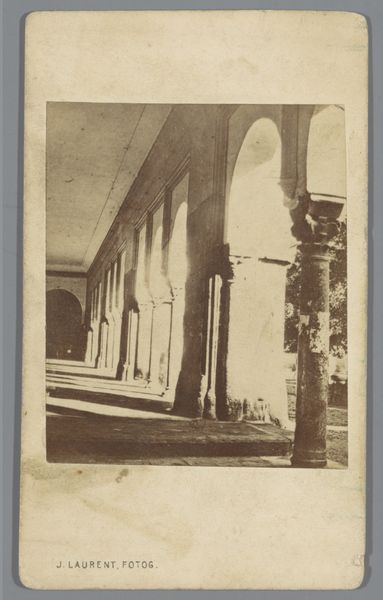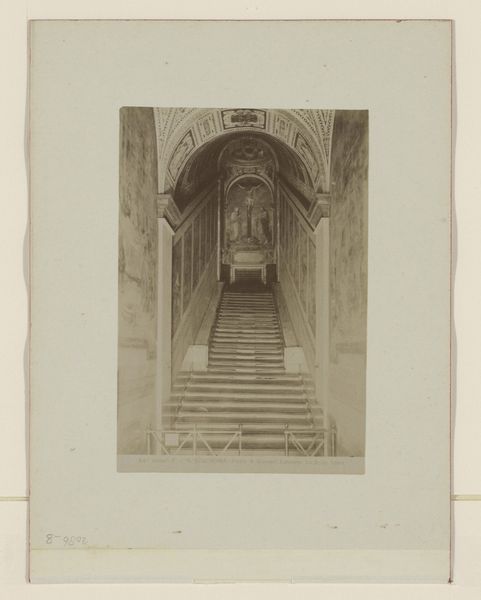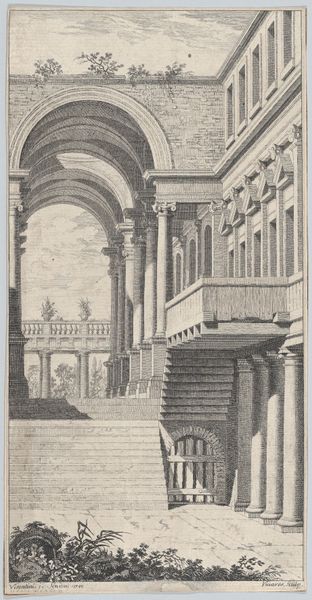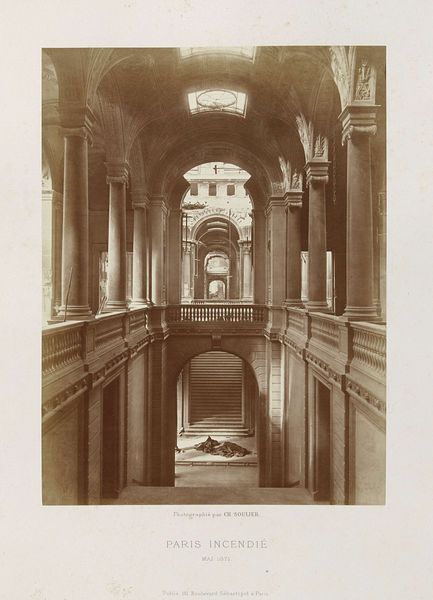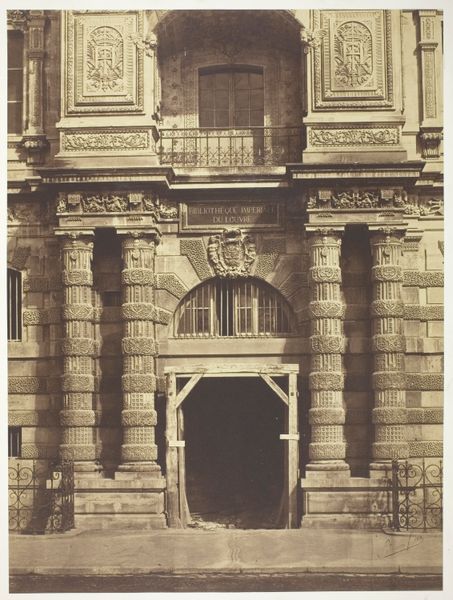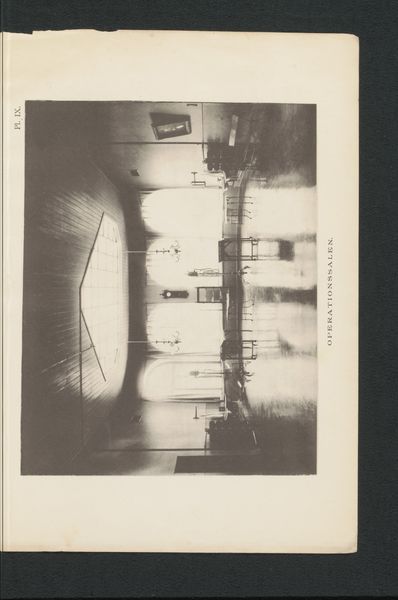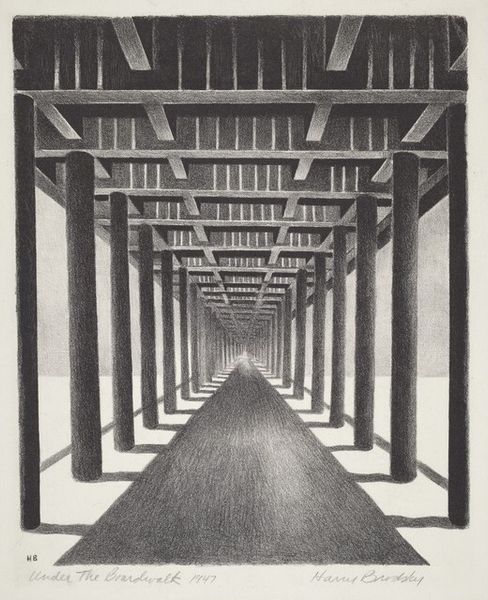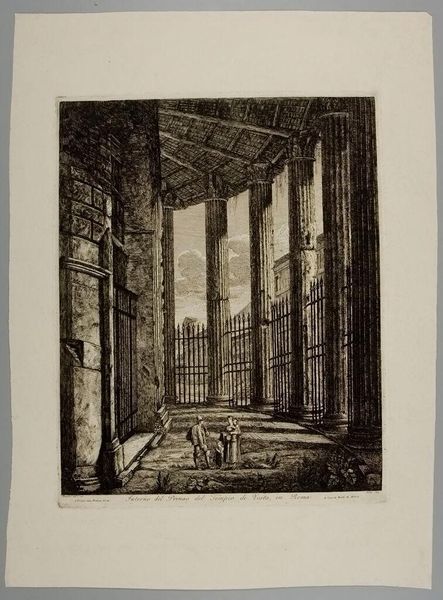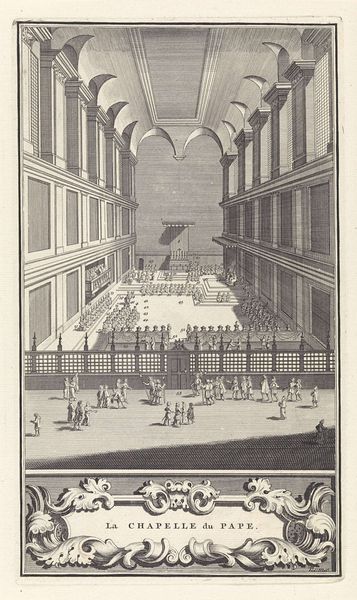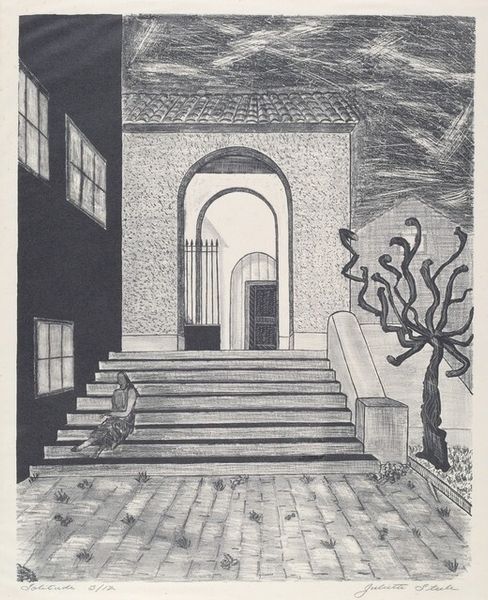
Colonnade de l'église de la Madeleine Possibly 1842 - 1965
0:00
0:00
daguerreotype, paper, photography, architecture
#
portrait
#
16_19th-century
#
daguerreotype
#
paper
#
photography
#
cityscape
#
architecture
#
realism
Dimensions: 21.2 × 16.2 cm (image/paper/mount)
Copyright: Public Domain
Curator: Hippolyte Bayard’s "Colonnade de l'église de la Madeleine" is an early example of architectural photography, potentially dating from 1842 to 1865, captured using the daguerreotype process. Editor: The perspective immediately grabs me. The harsh shadows cast by the colonnade create such a dramatic, almost oppressive atmosphere, but the sharp lines are oddly comforting. Curator: It’s fascinating to consider the context of early photography. Bayard, though not as celebrated as Daguerre, was a pioneer. These daguerreotypes, transferred onto paper, represent a crucial step in the medium’s evolution. Imagine the labour involved in setting up these early cameras, the time spent exposing the plates. Editor: Absolutely. The materiality is key. The physical presence of that metal plate, meticulously prepared and exposed. Also, this image, framed in this way, participates in a broader narrative about representing Paris, even shaping the visual language associated with it. The gaze of power embodied in neoclassical architecture of the time and its socio-political charge. Curator: I think, from a material standpoint, there is something quite democratic in the attempt to create such art accessible to everyone, through reproducible paper prints. Consider the rise of Realism around that time, which reflects the same spirit. Editor: Yet, access remained heavily mediated, didn't it? Who owned these prints, who displayed them? The image participates, consciously or not, in defining the urban landscape for a particular class, enforcing its symbolic importance within specific social circles. I see it also playing within established academic hierarchies by elevating photography to fine art. Curator: Perhaps. Yet, observing its craftsmanship and the sheer patience in rendering that play of light and shadow, makes it something available to everyone. Also, this image transcends a simple document and offers a certain poetry related to time through the chosen photographic method. Editor: Point taken, although, I still believe institutions and social contexts had a great impact on both production and perception of art at the time, influencing how it was shared and valued. Still, those shadows do pull you in. Curator: They really do. Thinking about how much information can be captured by light-sensitive material with such detail is pretty astonishing. Editor: Definitely. Makes you reflect about its place in the museum as part of a greater network.
Comments
No comments
Be the first to comment and join the conversation on the ultimate creative platform.


